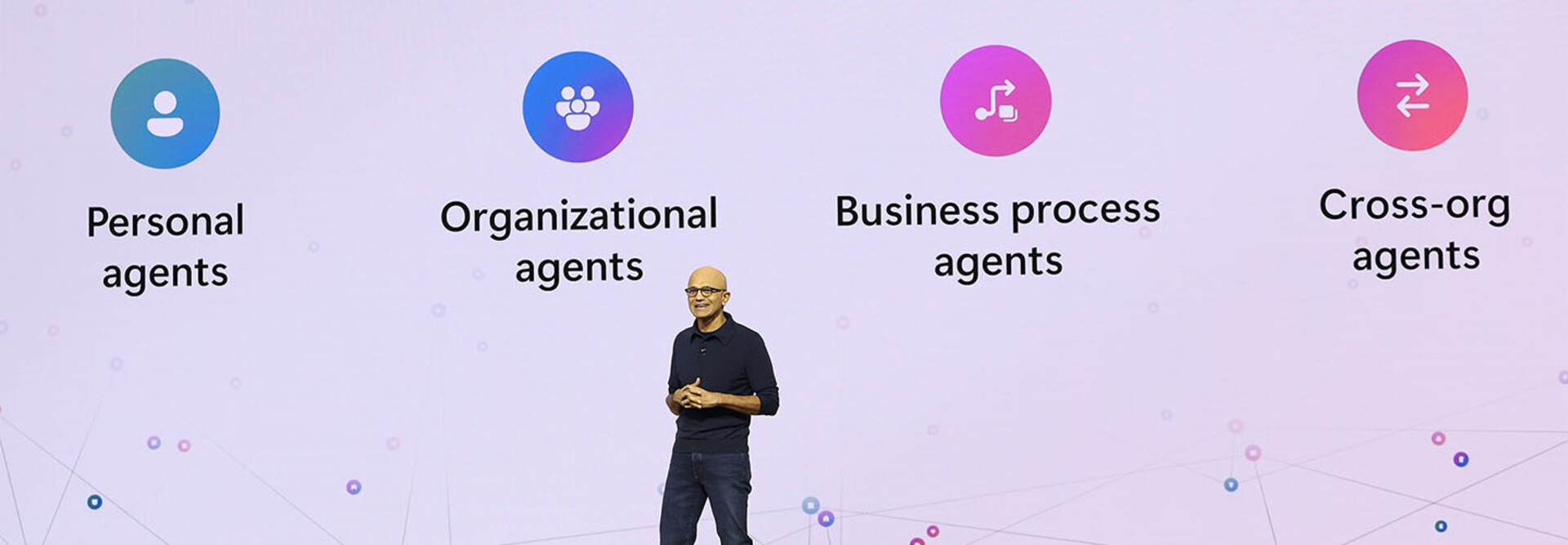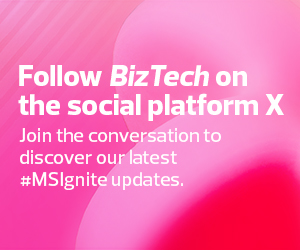“The trouble with artificial intelligence is that computers don’t give a damn. But we do,” said Microsoft CEO Satya Nadella at day one of Microsoft Ignite, hosted online and in person in Chicago November 19-22. During the keynote, Nadella and his team explained why the human element is so crucial to AI: IT leaders can train the models to make workflows faster and customer experiences better.
“It’s not about tech for tech’s sake. It’s about translating it into real outcomes,” Nadella said. A few examples of these business outcomes include pulling contextually rich responses, reducing query resolution times and handling large volumes of interactions.
“We now have this capability to support long-term memory, rich contexts, and in fact teach these models to use tools. So, if you put all those things together, you can build a very rich agentic world defined by this tapestry of AI agents that can act on our behalf across our work and life, across teams, business processes as well as organizations,” Nadella said.
Nathan Cartwright, chief architect for artificial intelligence at CDW, noted that AI’s impact goes beyond automation. “These models can also help with problem-solving and improve decision-making,” he said.
Here are three ways AI is revolutionizing the customer experience, according to experts at Ignite:
Click the banner below to revitalize your customer experience strategy.


1. Delivering Humanlike Interactions Through AI-Powered Avatars
AI-powered avatars deliver hyper personalized and lifelike customer interactions. CDW has harnessed the power of Azure’s text-to-speech avatar which uses advanced neural speech synthesis to simulate natural human communication for scenarios such as customer support or virtual consultations.
For example, a retail company can use the Azure TTS Avatar to provide real-time multilingual customer support during online shopping, guiding users through product selection with a conversational, empathetic tone. The avatar speaks in dozens of languages and can operate with accessibility modes.
“Hey Meg, can you say that again in Japanese?” Cartwright said in a live demo, introducing the AI.
Meg can also take coffee orders and send those orders through a back-end computer system, where a human barista receives them. Cartwright said this is just the beginning of how this technology will help businesses free up employees for more critical projects.
You can build a very rich agentic world defined by this tapestry of AI agents that can act on our behalf across our work and life, across teams, business processes as well as organizations.”
Satya Nadella
CEO, Microsoft
2. Large Language Models Support Contextual Analysis
With Azure OpenAI and agentic architecture, businesses can understand customer needs, providing highly accurate and context-aware responses. Combining large language models (LLMs) with retrieval augmented generation is the secret to dynamic querying of knowledge bases so that customers receive contextual responses in real time, experts say.
The AI models can quickly learn a user’s “work context,” Nadella said: “Who do they work with? What do they work on — their meetings, their email, their conversations, their documents?”
“It is grounded in your unique work context, your permissions. We think of agents as working alongside your personal Copilot to transform business processes,” added Rajesh Jha, Microsoft’s executive vice president of Experiences and Devices division.
Financial firms are using the technology to provide nuanced answers to client queries about complex investment portfolios. Factoring in personalized data and market trends, these agents can analyze data and provide recommended next steps. This means more time reallocated to customer-facing interactions.
Click the banner below to keep up with exclusive stories from BizTech as an Insider.


3. Integrating and Accelerating Workflows with Seamless Automation
Agentic architectures can also automate intricate workflows while maintaining a human touch, ensuring that every item is handled.
Think of any laborious task: This technology can enhance the customer-facing or back-end process. Some enterprises are using it for expense reports; others are opting to automate the entire employee onboarding experience, reducing the workload for HR teams, Nadella said.
In the case of onboarding, new hires can interact with an Azure TTS Avatar, which guides them through onboarding tasks such as setting up corporate accounts, understanding company policies and completing training modules. Behind the scenes, the system queries relevant HR databases, compliance records and team-specific documentation to provide personalized answers to employee questions.
RELATED: Azure and CDW solutions can accelerate your artificial intelligence journey.
Manufacturing companies are also using this technology to automate their internal support desks for factory operations. When a machine operator reports an issue through a voice-enabled Azure TTS Avatar, the system automatically queries past maintenance records, operational manuals and Internet of Things sensor data to identify potential causes. It then provides step-by-step troubleshooting guidance or schedules a technician visit, reducing downtime.
Ultimately, this synergy between companies including Azure, CDW and Microsoft is setting new standards for customer-centric innovation. It just requires that humans continue to train the models and oversee the outputs (Microsoft is currently training over 23 million people in AI). “As we enter these middle innings of AI, it’s up to us to empower human achievement,” Nadella said.
To learn more about Microsoft Ignite, visit our conference page. You can also follow us on the social platform X at @BizTechMagazine to see behind-the-scenes moments.
Photography by Coco Aramaki, Matt Villanueva, Marshall Miller, Derrick Louie © Microsoft
















